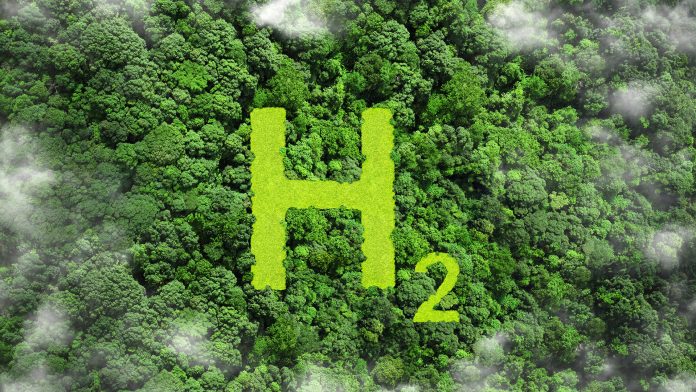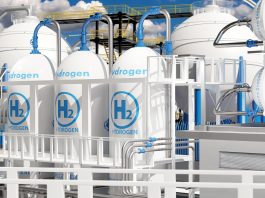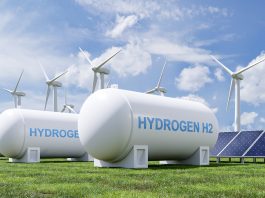Jorgo Chatzimarkakis, CEO of Hydrogen Europe, EUSEW’s partner organisation, discusses how green hydrogen has the potential to power Europe’s clean tech industry.
Entering office in 2019, the European Commission, led by Ursula von der Leyen, rallied around a European Green Deal as a policy priority. The new Commission would design a growth strategy to ensure Europe remained a prime destination for investments that bring stable, future-proof quality jobs, with a strong industrial base.
Regulatory bottlenecks, uncertain investment environments, and international supply chain issues should not be ignored if this priority is to become a reality.
The events in Ukraine sparked transformation in Europe, later reinforced by the announcement of the US’ Inflation Reduction Act: this has led the Commission to complement the green transition agenda with initiatives such as the Net-Zero Industry and the Critical Raw Materials Act, the extension of the state aid framework and the introduction of the Hydrogen Bank, among others.
Despite some important steps forward in recent years, particularly in clean tech, Europe continues to be hamstrung on the issue of international competitiveness. Without a real mission to solve the obstacles to the continent’s economic ambitions, no Commission will manage to maintain a strong industrial base full of future-proof jobs in Europe while transitioning to net zero. With clean hydrogen, Europe has a chance to secure a leading role in a multi-billion-euro global industry—with all the benefits that come with it.
Addressing supply chain uncertainties, increasing financial support for key sectors, and decreasing regulatory burdens on new technologies would be a great start.
Expanding supply chains
At the end of April, the European Parliament agreed on the highly anticipated Net-Zero Industry Act (NZIA) that, along with the Critical Raw Materials Act, represent two of the pillars to protect, expand, and enhance supply chains and domestic capabilities for key European industrial sectors, including hydrogen.
The NZIA aims to ensure that the Union’s net-zero technologies manufacturing capacity meets at least 40% of annual deployment needs by 2030. Europe remains competitive in hydrogen technologies, particularly electrolysers, and can meet these targets. However, most European support mechanisms (e.g. Hydrogen Bank), still prioritise price-only competition, potentially undermining European companies’ global prospects. In contrast, other regions are adopting measures like local content requirements to strengthen their own domestic supply chains.
To promote strategic autonomy, we must consider factors like safety, performance, resilience, and social benefits prior to accessing European funding.
Financial support
The recent results from the Hydrogen Bank pilot auction were encouraging. The seven winning projects all came in under €0.5 per kg of hydrogen produced, far below the €4.5 per kg/H2 ceiling price. In all beginnings dwells a magic: the hydrogen sector is there and showed that it can deliver.
While the pilot was a success, the Commission should ensure that the 2024 auction will be bold enough to further reduce the price gap, especially eyeing the most affected and hard-to-decarbonise economic activities across Europe. The budget of €800m and the massive oversubscription left most projects unsupported, while the winning ones are still at risk of not reaching cost-parity with grey hydrogen by the time the subsidies reach project promoters. The next auction should be more flexible, e.g. in terms of cumulation with state aid (for the same costs) and time of delivery. Furthermore, a greater ambition for the overall budget and the introduction of strong resilience criteria are sought to be competitive in the global market.
Other forms of support for green hydrogen are available, but despite the funding envelopes, these programmes share a common bottleneck: burdensome processes with subsequent delays in the allocation of funds.
Speeding up procedures to accelerate clean tech
In both Hydrogen Europe’s manifesto and the Letta report, speed of delivery is paramount. Both highlight the need to significantly reduce the time required for clean tech companies in Europe to access incentives, and for these companies to bring their technologies to market. This means speeding up not only permitting procedures, which in Europe harms every clean technology to some extent but funding access too.
The timeline of the Hydrogen Bank, from its first announcement to its first auction ending less than 18 months later, is a virtuous example. We should make this exception the norm, to enable Europe to become the global home for clean tech. Hydrogen technologies should be at the forefront, paving the way for a more sustainable, decarbonised, and resilient future for everyone.
Recommended links
- Letta report: https://www.consilium.europa.eu/media/ny3j24sm/much-more-than-a-market-report-by-enrico-letta.pdf
- Hydrogen Europe press release on NZIA: https://hydrogeneurope.eu/ep-votes-nzia-through-but-challenges-remain-for-clean-tech-manufacturing-value-chain/
- Hydrogen Europe manifesto: https://hydrogeneurope.eu/wp-content/uploads/2024/02/HydrogenEurope_Manifesto_EUelections.pdf










